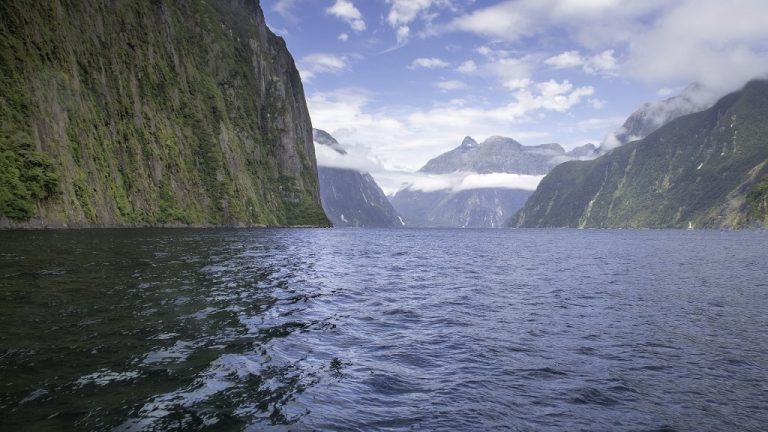At times, the magic of a place lies beyond its beauty or food. It’s in the echoes of its history. While at the Great Wall of China, surrounded by others, I felt history come alive. I sensed the ancient warriors and their determination. These places, rich with history, connect us deeply to our past.
The Pyramids of Giza and the ruins of Machu Picchu are like portals to another era. Every stone and structure tells a part of humanity’s grand tale. Visiting these sites merges learning with the excitement of heritage travel. They provide memories that last a lifetime.
Imagine roaming Jaipur’s pink streets or standing under the Parthenon’s columns in Athens. These aren’t just trips; they’re deep dives into historical sites that have shaped our world. Each place offers a unique story of the past.
Key Takeaways
- The allure of historic landmarks like the Great Wall of China lies in their stories and significance, offering a connection to past cultures.
- Visiting places such as the Pyramids of Giza or Machu Picchu is an immersive heritage travel experience that leaves a lasting impression.
- Ancient history vacations offer educational enrichment alongside thrilling adventures.
- Historical destinations like Jaipur and the Parthenon provide a blend of architectural marvels and pivotal moments of human history.
- Exploring these remarkable sites enhances our understanding of diverse civilizations and their indelible impacts on the world.
The Great Wall of China: A Symbol of Strength and Resilience
Traveling to the Great Wall of China is like going back in time. You get to see the history and strength of centuries. This massive structure shows the hard work of Chinese dynasties to keep their empire safe from invasions.
Historical Background
The Great Wall spans over 13,000 miles, covering mountains in the east to deserts in the west. Its building started in the 7th century BC, lasting more than 2,300 years. The well-known parts made during the Ming Dynasty are about 500 years old.
The wall was built to stop invaders and served as a key route for communication and transport. Its many watchtowers and fortresses show the blend of military and cultural history across the rugged landscape.
Best Time to Visit
For a historical adventure, spring and autumn are the best times to see the Great Wall. These seasons have nice weather and not too many people. The months from April to June and September to November are perfect for enjoying the wall’s history and beauty.
Travel Tips and Recommendations
Here are some tips for your historical tour to this amazing site:
- Spend at least half a day to truly feel the greatness and history of the Great Wall.
- The Badaling section is close to Beijing and well-kept but often busy. The Mutianyu section, 45 miles northeast of Beijing, has great views and fewer visitors.
- It’s important to take care of the Great Wall as it is a UNESCO World Heritage Site. Stick to the paths, don’t litter, and respect this magnificent structure.
Visiting the Great Wall is more than just a trip; it’s a journey into deep history. By traveling responsibly, we help keep this ancient wonder available for future visits. This makes our historical adventures significant.
Machu Picchu: The Enigmatic Incan Citadel
High in the Andes Mountains of Peru sits Machu Picchu, a testament to Incan genius. It’s among the world’s most fascinating historic landmarks. This UNESCO site lets you travel back in time, exploring the Incan civilization’s amazing legacy.
Historical Significance
Since its discovery in 1911 by Hiram Bingham, Machu Picchu connects us to the Incan Empire. It rises 7,900 feet above sea level, blending well-kept ruins with stunning views. Over a million people visit yearly, showing its draw as a top heritage travel spot.
Best Time to Visit
Visit Machu Picchu from May to October for the best weather. This dry season is perfect for the Inca Trail. The 4-day hike covers 26 miles across the Andes, offering a historical destination adventure.
How to Get There
To get to Machu Picchu, most visitors mix train rides with some hiking. Start by getting used to the high altitude in Cusco. Flights to Cusco from Lima are easy to find. Remember, trekking permits must be booked early because of access rules.
Get ready months ahead with proper training and packing. Bring hiking essentials, layers for the weather, rainwear, sunblock, bug spray, and a water bottle. Promote responsible tourism by disposing of waste properly and lessening environmental harm. This preserves Machu Picchu’s beauty and historic worth.
If you dream of a unique heritage travel experience, Machu Picchu is an incredible journey to the past.
The Roman Colosseum: A Glimpse into Ancient Rome
The Roman Colosseum, a famous landmark, lets you travel back in time. It is the biggest amphitheater built, holding up to 80,000 people. It has 80 entrances for easy crowd management.

Architectural Marvels
The Colosseum covers 24,000 square meters and stands 48 meters tall. It features 36 trap doors for special effects. Built in under 10 years using 60,000 Jewish slaves, it shows off Roman engineering skills. Its exterior has three stories with arches and columns in Doric, Ionic, and Corinthian styles.
Stories of Gladiatorial Contests
The main aim of the Colosseum was for gladiatorial contests and public events. These spectacles, starting with Emperor Titus in AD 80, were key for social unity in Rome. The Ludus Magnus, nearby, housed the gladiators. It had seats for 3,000 viewers during practice sessions.
Travel Tips
To visit this iconic site, spring and autumn are the best times. This avoids extreme weather and large crowds. Guided tours last 3 to 4 hours. They cover the Colosseum, the Roman Forum, and Palatine Hill. You get panoramic views and a deep dive into history.
Historical Travel: Immersing Yourself in Time
Historical travel takes you on an adventure through time. Imagine walking the ancient Via Appia in Italy, built 2,300 years ago. Or exploring the Longmen Grottoes in China, home to over 100,000 Buddhist figures.
Travelers can dive into local histories through expert-led tours. Visiting Charleston, South Carolina, for instance, offers insights into America’s past.
The Grand Egyptian Museum in Giza, Egypt, spans nearly 5.3 million square feet. Busan, South Korea, boasts a vibrant history with 3.4 million people. These sites let you walk in the footsteps of historical figures.
About 70% of consumers seek cultural immersion in their travels. With spending on such experiences up 34% from 2019, it shows a strong interest in meaningful trips.
Following responsible tourism practices is vital. Staying on paths and leaving no trace preserves these sites for future adventurers.
Choosing reputable travel organizations, like Academic Travel Abroad, enhances your trip. They offer well-planned tours that connect you deeply with the past.
Historical travel isn’t just about places; it’s about experiencing stories and legacies. So, get ready to explore the world’s most impactful historical sites on an unforgettable journey.
The Majestic Pyramids of Giza: Ancient Wonders
The Pyramids of Giza showcase ancient engineering and Egyptian civilization’s grandeur. Built around 2600-2500 BC, they include the Great Pyramid of Khufu, the Pyramid of Khafre, and the Pyramid of Menkaure. The Great Pyramid stands out at 481 feet tall, covering 13 acres.
Contrary to some stories, skilled workers built these wonders, receiving pay for their labor. The smallest, the Pyramid of Menkaure, also has its unique charm and significance. Millions visit these landmarks annually, boosting Egypt’s economy and promoting cultural appreciation.
Efforts to preserve these pyramids continue, ensuring they awe future generations. Despite much exploration, their mysteries still captivate many. Visiting the Pyramids of Giza allows for exploring an ancient, fascinating site.
Tours may include the three pyramids along with the Egyptian Museum, the Sphinx, and Khan El Khalili Bazaar for a fuller historical snapshot. Adding camel rides, quad bike adventures, and market visits makes the trip unforgettable.
Private tours give a personalized touch with expert guides, often extending to Memphis City and the Dahshur and Sakkara Pyramids. Whether choosing full-day or half-day tours, each offers insights into Egypt’s ancient marvels. Exclusive tours deepen the experience, revealing more about the pyramids and Sphinx’s mysteries.
The Forbidden City: Unveiling Imperial China
The Forbidden City was finished in 1420. It is a stunning symbol of China’s imperial history. It was first the home of the Ming Dynasty emperor Yongle. Now, it’s a key icon of cultural and historical importance. This place covers 178 acres and is surrounded by huge walls. These walls could fit more than 50 Buckingham Palaces inside! The Forbidden City lets people see the splendor of China’s ancient history.
Historical Importance
For five centuries, the Forbidden City was where emperors and their courts lived. It became a UNESCO World Heritage Site in 1987. This important spot attracts people who love history and want to learn more. The Wu Gate, which is about 125 feet tall, is the entrance. The Hall of Supreme Harmony shows the amazing skills of the Ming and Qing Dynasties.
The Forbidden City has buildings from the 15th century. It’s a key place for those interested in historical sites and ancient vacations.
Architectural Highlights
The architecture of the Forbidden City is breathtaking. Each part adds something special to its impressive atmosphere. The Outer Court covers about seven acres. The beautiful Imperial Garden is over three acres. Visitors can dive into the history of Imperial China.
The Hall of Supreme Harmony is one of the standout structures. It’s 210 by 122 feet. It was central to imperial ceremonies and state events. This hall highlights the magnificence of China’s historical sites.
There’s a growing interest in Liao artifacts and their role in Chinese history. This reevaluation adds new understanding to the Forbidden City. Archaeological finds and studies offer new insights. They make this site an even more attractive place to visit.
Conclusion
Reflecting on this journey through historic sites, its depth and reach stand out. I explored 33 countries, touching various cultures and landmarks. From the Great Wall of China’s ancient forts to Machu Picchu’s mysteries, each site revealed humanity’s creativity and toughness.
My travels spanned 28 states and 10,000 miles in a 2004 Toyota Avalon. This added a personal touch to my discoveries. It was more than just seeing sites. The unexpected events, challenges, and even the funny disagreements, made me appreciate our history more. I took thousands of photos, but only a few captured the essence of this 13-month quest.
Visiting these places means more than seeing grand buildings. It’s about connecting with their stories. Standing before the Roman Colosseum’s grandeur or the Forbidden City’s history, I gained a deeper respect for our collective past. It even made me see my own country differently. This trip didn’t just change how I see travel; it was a deeply moving, educational, and life-changing journey. Let’s keep valuing and protecting these wonders for future generations.











